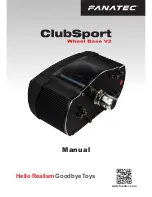
2 of
10
Rotac
®
TEARDOWN, INSPECTION AND ASSEMBLY
PURPOSE:
To instruct designated personnel in the teardown, inspection, seal replacement and the reassembly of Rotac
®
Rotary Actuators. Minor repairs will be examined; however, repairs without proper engineering information and
machine capabilities may be costly. These cases call for factory service and should be referred to the factory
for repair. Factory repairs will bring the unit to the latest design within that product line. All workmanship and
parts will carry a full warranty of 6 months usage, or 12 months from date of shipment, whichever comes first.
Disassembly:
Read the special instructions below before proceeding. Reference Figure 4 for general location of
parts
1. Clean exterior of unit as clean as possible. This will assure you that any material found in the unit is a
result of wear, system contamination or damage. A more accurate evaluation of the unit and operating
system is thus obtained..
2. Remove all burrs from the shaft (5) extension.
3. Match mark the head (2) and housing (1) so that their relationship can be re-established when
reassembled.
4. After removing head screws (22) from the head (2), strike end of shaft (5) with plastic mallet or
aluminum bar stock, and allow the shaft (5) to push the head (2) off. DO NOT PRY HEADS OFF!!!
Damage will occur to the housing (1) or head (2). Some of the newer designs have threaded holes in
the head (2) that allow the use a bolt to assist in separating the head (2) from the housing (1)
5. Pull the shaft (5) out, being careful that the vane on the shaft does not fall and nick the housing (1).
6. The shoe (6) will usually come out by pulling on it with your hands, however, it many sometimes be
necessary to pull with your hand while tapping the shoe dowel pins (24) lightly. NEVER PRY THE
SHOE OUT!!!
7. Remove the retainer bolts (25) and retainer (18) from head (2).
8. Remove the shaft seal cap (13), the shaft seal (12) and retainer seal (17).
9. Press-out the thrust bearing (3) and roller bearing (4), thrust washer (19) and shims (21).
10. Repeat step 7, 8 and 9 for the housing (1).
11. Remove the seals from the shoe (6) and shaft (5) and inspect for cuts, nicks, or any other unusual
conditions of the seal. (Compare to new seal kit).
INSPECTION:
1. Examine oil residue inside actuator. This may give a clue as to why any damage has occurred.
A. Dirty or gritty oil will cause scoring of internal surfaces.
B. Varnish on internal parts can be a sign of oil in system running too hot.
Содержание 26R
Страница 9: ...9 of 10 Figure 5 Thrust Bearing...




























